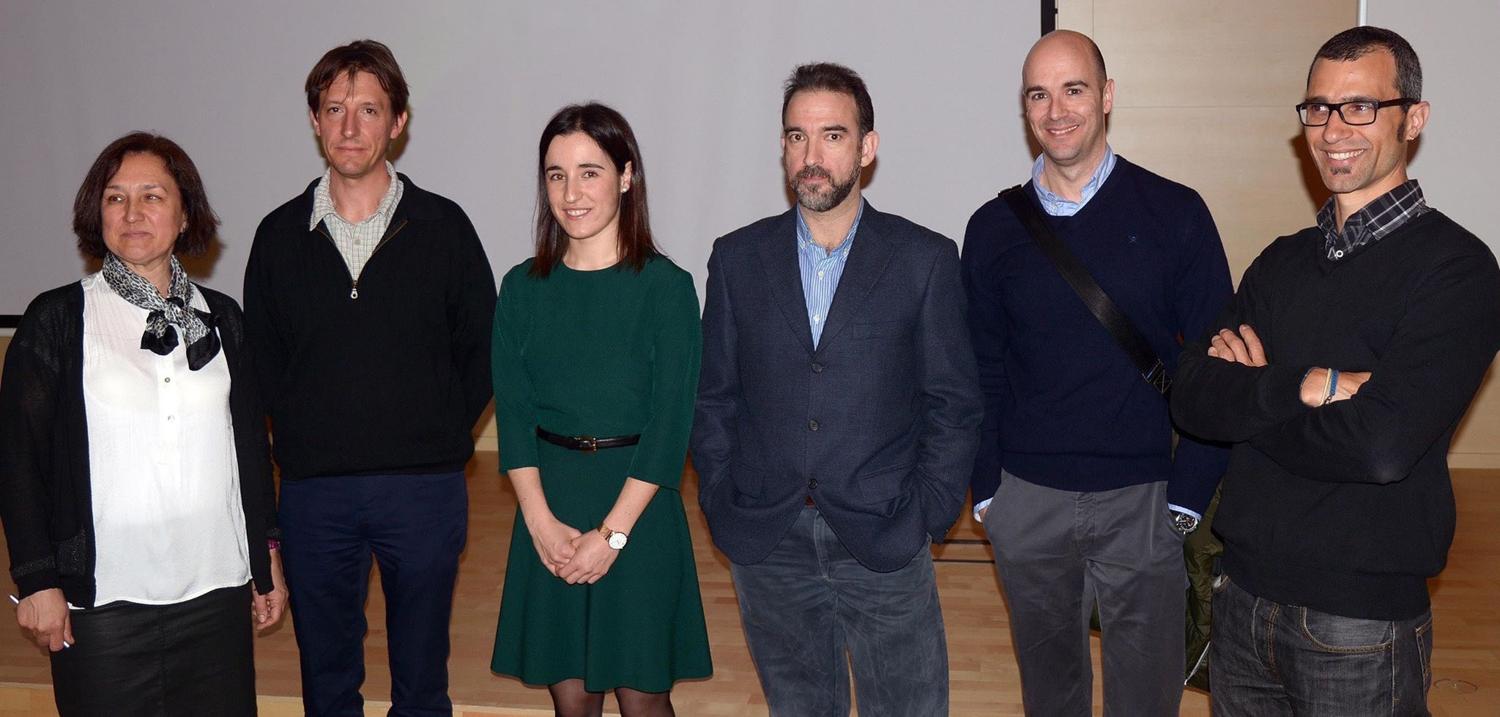Spin injection in two-dimensional layered materials, PhD thesis by Oihana Txoperena
Oihana Txoperena, Pre-doctoral Researcher at the Nanodevices Group at CIC nanoGUNE, received her PhD at the University of the Basque Country (UPV/EHU) after the defense of her thesis project on 8th April 2016. Her research work, entitled “Spin injection in two-dimensional layered materials", has been developed under the supervision of Dr. Fèlix Casanova, Ikerbasque Research Professor at the Nanodevices Group.
An international committee including leading researchers in the field was selected to assess the research project:
- Nerea Zabala (UPV/EHU, Basque Country)
- Luis Morellón (Unizar, Zaragoza, Spain)
- Matthieu Jamet (CEA, Grenoble, France)
The defense consisted of a presentation by the candidate on the main aspects of the Ph.D. thesis project followed by an extended discussion based upon the questions that each one of the members of the committee raised in relation to the research work that has been carried out by Oihana Txoperena during her PhD studies. After its final deliberation, the committee decided to award the candidate the Doctor Degree with the highest mention existing at UPV/EHU (cum laude).
After the defense, we asked Dr. Oihana Txoperena to explain us a bit more about his project:

Which was the subject of your thesis?
My PhD thesis was mainly focused on the propagation of spins on two-dimensional layered materials, more specifically transition metal dichalcogenides.
Why did you choose this subject?
One of the main challenges of spintronics is finding a material allowing both spin transport through long distances and a direct manipulation of the spin information during its transport. These two properties are mutually exclusive in most of the materials, but not in some transition metal dichalcogenides: the large spin-orbit coupling makes spin manipulation possible, whereas the breaking of the inversion symmetry keeps the spin transport distance long enough. Electrical spin injection on these kind of materials was elusive when I started my PhD, and I found the challenge very interesting.
Which metodology/techniques did you use?
This thesis involved two different kind of devices: on the one hand, micrometer-sized devices were fabricated by electron-beam evaporation through shadow masks; on the other hand, fabrication of nanodevices was carried out by electron-beam lithography and both electron-beam and thermal evaporation of metals. All the devices were characterized in a liquid helium cryostat at temperatures down to 2 K and applying magnetic fields up to 9 T, which enabled the study of different spin-dependent phenomena.
Which have been the main conclusions?
Given that spin-based phenomena are usually measured in nanodevices, we first tested the reliability of the so-called three-terminal Hanle measuremenets in micrometer-sized devices. Employing those devices in metals, we concluded that this widely-used method is greatly affected by the presence of impurities in the devices, and therefore does not yield the spin transport properties of the material under study. Using the gained information on these experiments, in the second part of the thesis we proposed an alternative approach for exploring the spin-based phenomena in two-dimensional layered materials. In our case, we employed molybdenum disulfide (MoS2). We demonstrated electrical spin injection into MoS2 for the first time in a device based on a MoS2/graphene van der Waals heterostructure by using electrical gating.
What could be the contribution of your research for present or future nanotechnologies?
This novel approach, combined with recent advances in chemical production of high quality graphene and transition metal dichalcogenides, may well lead to applications in the information and communication technology sector. Furthermore, these experiments opens the path for fundamental research of exotic transport properties predicted for transition metal dichalcogenides.
How do you feel now that you have finished the thesis? Which are your plans for the future?
I feel very lucky for the opportunity of doing my PhD in such an outstanding research center, and very grateful to my supervisor Fèlix for his constant support during these years. I am currently working in Graphenea as a research scientist, where I can continue doing research in two-dimensional layered materials, in this case chemical vapor deposited graphene films.
